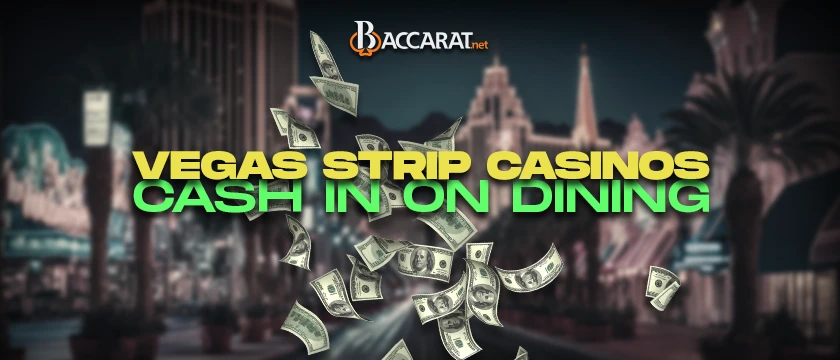
The Surprising Truth About Las Vegas Casino Revenue
Listen to this article:
When people hear the words “Las Vegas”, the first thing they think of is usually gambling. As a player of online baccarat, you are likely imagining things such as slot machines, baccarat tables, roulette wheels, and vast, buzzing casino floors. However, you may be surprised to learn that gambling isn’t as dominant on the Las Vegas Strip as it used to be. In fact, over the last three decades, Las Vegas’ casino revenues have increasingly moved away from the gaming floor towards dining, entertainment, accommodation, and shopping.
In the 1950s through the early 1990s, approximately 75% of the average revenue of the Strip casinos wasn’t from dining; it came directly from gambling. During this time, casinos commonly offered complimentary rooms, meals, drinks, and shows to attract new players and give them an incentive to return. These benefits were awarded through systems such as the casino’s “special guest card”, which was first introduced by the Dunes Hotel in the 1960s. This card recorded guest buy-ins and was key to determining who received free benefits or “comps”.
Gambling Accounts for Just 25% of Revenue
Today, things are very different. Gambling now accounts for only about one-quarter of revenue on the Strip. Recent quarterly earnings reports from the three largest casino resort companies clearly demonstrate this change. MGM Resorts Las Vegas reported only 23.4% of its 2.037 billion dollars revenue from gambling operations. Similarly, Caesars Las Vegas made 27.6% of its 1.142 billion dollars from gaming, and Wynn Las Vegas generated just 24.1% of its 561 million dollars in revenue from gambling.
With gambling contributing less to overall revenues, casinos have had to adapt their approach to comps and benefits. Unless visitors are engaging in high-stakes gaming, rooms are rarely offered for free, in stark contrast to how things used to be.
This revenue transformation is largely down to the vision of casino developer Steve Wynn. In 1989, Wynn opened The Mirage with the aim of providing a level of luxury more comparable to Monte Carlo than the traditional Las Vegas experience. Wynn’s intention was to move the focus away from budget-driven buffets and shows toward high-end dining and lavish entertainment.
As Michael Green, a professor of history at UNLV:
“Wynn had said a few years before that Las Vegas didn’t need another casino, but it sure needed an attraction. By that time, more states and areas had legal gambling in some form, tribal and riverboat casinos loomed, and Atlantic City was siphoning off business. If you wanted to gamble, you didn’t need to go to Las Vegas, and soon you would have even more options. So, Las Vegas had to compete.”
The Las Vegas Entertainment Revolution
The opening of the Mirage became a turning point for Las Vegas. The introduction of luxury restaurants such as Kokomo’s, where guests could dine on high-quality steak and seafood in a rainforest setting, proved that resorts could make huge profits from dining. This encouraged other resorts to improve their culinary offerings. It wasn’t long before celebrated chefs such as Wolfgang Puck opened restaurants on the Strip and helped to make dining one of the main sources of Vegas’ revenue resorts.
Entertainment soon followed. Wynn’s belief in entertainment became evident when, in 1990, he created a 40 million dollars theater exclusively for the illusionists Siegfried and Roy and charged audiences more than 100 dollars per ticket. According to Green, this was a truly important moment as it ensured shows became profitable for resorts. Furthermore, performances transformed from weeklong engagements by stars such as Elvis Presley and Liberace to extravagant shows that were specifically designed to generate profit.
Additionally, the corporate takeover of the casino industry led to the rise of “four-walling”, where casinos leased their theaters to independent producers instead of covering show costs themselves. This opened the door to world-famous headliners, Broadway productions, and international acts such as Cirque du Soleil.
In short, while gambling will likely always be an integral part of Las Vegas’s identity, the city’s financial focus has changed. Today, Las Vegas Strip casinos’ revenue relies on dining, entertainment, shopping, and luxury accommodations, rather than only relying on the gaming floors to turn a profit.
Hi, I’m Caroline, an experienced editor with a rich background in journalism. My career began at several Boston-based newspapers, where I specialized in editing and …











